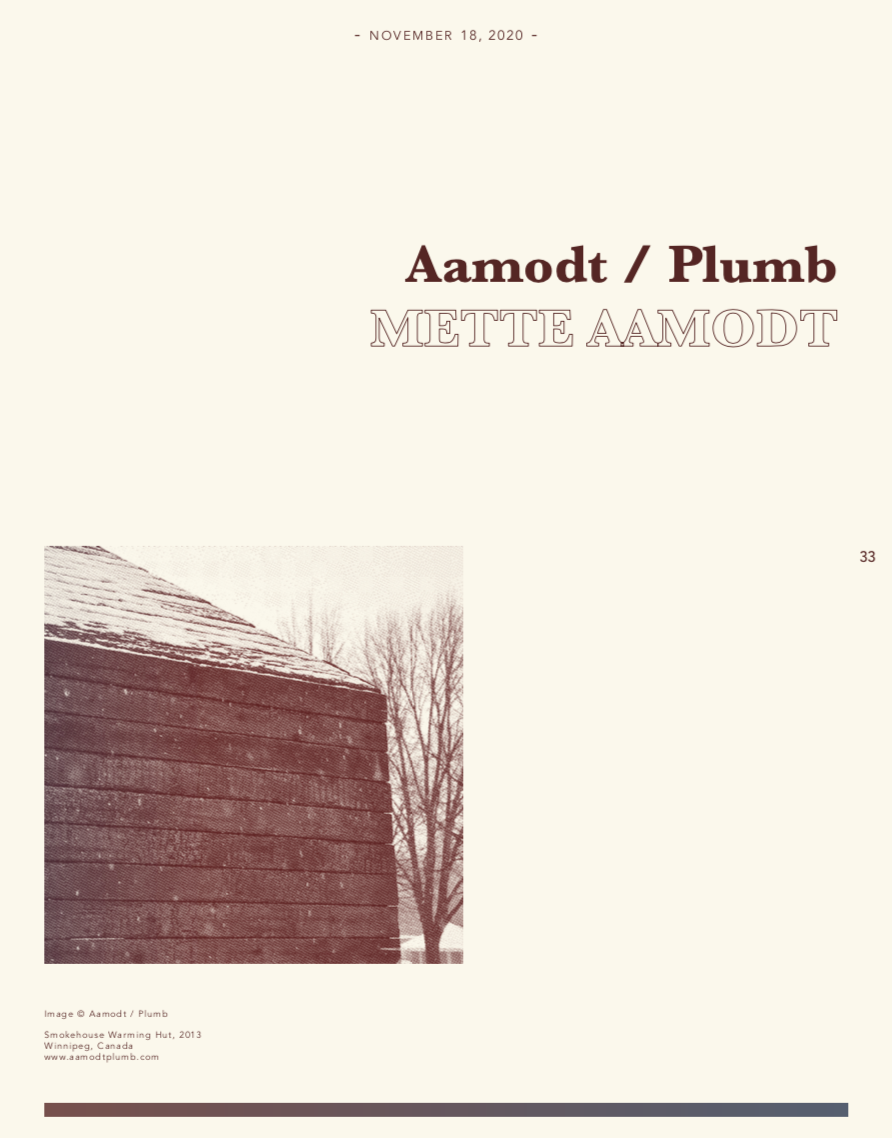
Searching for Slowness: Aamodt / Plumb In Conversation
In the fall of 2020, Aamodt / Plumb had the pleasure of being interviewed by Caroline Amstutz + David Pankhurst, a couple of MIT Architecture grad students, for their project on Slow Architecture. They also interviewed Todd Williams Billie Tsien Architects, RMA Architects, Studio Mumbai, and MASS Design Group. Read below for an excerpt from our conversation and the link to download our complete interview.
How intentional was the shift from traditional practice to a design-build?
We became a design-build studio in a rather round-about way. We became interested in quality materials, craftsmanship, and a deep understanding of how things go together – and in a design-build, you have complete control over the final product. We are interested in using slow, raw, and whole materials–materials that are not composite or industrially produced, but rather materials that come from the earth.
How does the firm set up–organizationally speaking–support slowness?
We are comprised of two entities – this is purely for insurance reasons, however, we functionally operate as one company with complete oversight and involvement through the entire architecture and construction process.
While the design process is similar to most firms, we dip far deeper into construction management. Our associates are project managers and construction managers – they go from the design process to construction documentation, bidding, and procurement. The process is seamless and our staff gains a deep understanding of the entire design-construction process.
We learn so much by taking responsibility over this slow design process, and we can then take ownership and accountability for every decision along the way. As our staff gain a better understanding of the construction side of the equation, this feeds back into their design process, and design becomes more streamlined.
A criticism lobbied about slow architecture is the economic model required to sustain the practice. Can you describe the current model?
Slowness isn’t literally slower on a timescale – it’s a mindset of thoughtfulness. While we constantly think about our principles, we don’t produce any slower than other firms of our size. Architecture and construction are inherently slow – the higher expenses of “slow” architecture projects typically come from the material costs, not the speed of the design execution. High quality, fairly produced materials simply cost more, and there is no real way around that.
What is the studio’s relationship to materiality and craft?
Craftsmanship has a long tradition in the US, but recently young people have been pushed to receive higher education, to not work with their hands or “get dirty” in any way. There is very little respect for working with your hands, and as a result, good craft is now so expensive. The goal is to build back that base of strong craft in the US, and for us to find a network of reliable Artisans to work with.
Read our full interview with Caroline and David: Click Here
Learn more about their fantastic final project: https://www.slowspace.org/searching-for-slowness-a-future-paced-ethos/




